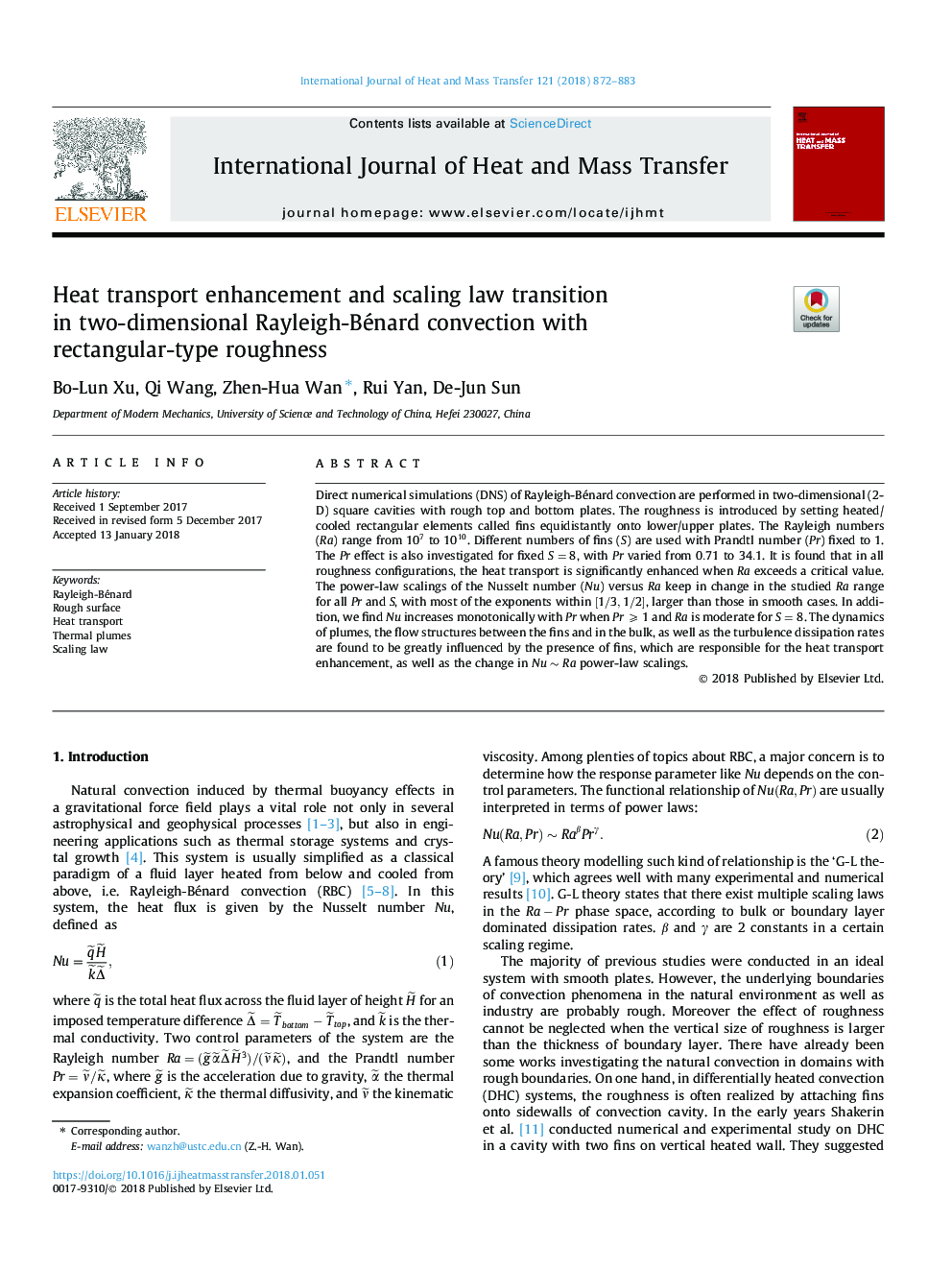| Article ID | Journal | Published Year | Pages | File Type |
|---|---|---|---|---|
| 7054533 | International Journal of Heat and Mass Transfer | 2018 | 12 Pages |
Abstract
Direct numerical simulations (DNS) of Rayleigh-Bénard convection are performed in two-dimensional (2-D) square cavities with rough top and bottom plates. The roughness is introduced by setting heated/cooled rectangular elements called fins equidistantly onto lower/upper plates. The Rayleigh numbers (Ra) range from 107 to 1010. Different numbers of fins (S) are used with Prandtl number (Pr) fixed to 1. The Pr effect is also investigated for fixed S=8, with Pr varied from 0.71 to 34.1. It is found that in all roughness configurations, the heat transport is significantly enhanced when Ra exceeds a critical value. The power-law scalings of the Nusselt number (Nu) versus Ra keep in change in the studied Ra range for all Pr and S, with most of the exponents within [1/3,1/2], larger than those in smooth cases. In addition, we find Nu increases monotonically with Pr when Pr⩾1 and Ra is moderate for S=8. The dynamics of plumes, the flow structures between the fins and in the bulk, as well as the turbulence dissipation rates are found to be greatly influenced by the presence of fins, which are responsible for the heat transport enhancement, as well as the change in Nuâ¼Ra power-law scalings.
Related Topics
Physical Sciences and Engineering
Chemical Engineering
Fluid Flow and Transfer Processes
Authors
Bo-Lun Xu, Qi Wang, Zhen-Hua Wan, Rui Yan, De-Jun Sun,
